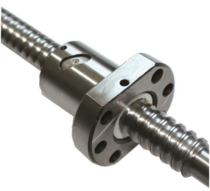Various Uses of Ball Screws

A ball screw, originally called an anti-friction nut, is a mechanical device used to change rotational motion to linear motion. They feature threaded shaft and ball bearings, withstanding significant weight and stress while minimizing friction. A ball screw has both a nut and a screw that allow the ball bearings to rotate between them.
There is a narrow gap between the applications that need a lead screw and those that require ball screws. It makes it difficult for designers and engineers to decide on the best technology for a machine. Despite the overlap, there are applications fit for each technology. In cases where the requirements exceed the capabilities of load screws, a ball screw performs as needed. If you need to use this technology, you can get Kugelgewindespindel at a fair price from the leading company that is customer-oriented.
Below are the various uses of ball screws:
In Places Where You Need High Accuracy
Unlike the lead screws that have backlash linking the screw and the nut, the screws are preloaded, removing backlash. You attain by using balls larger in diameter to the space between the nut and the screws raceways. Other lead screws have nut designs to eliminate backlash. However, they add friction, reducing efficiency. Additionally, the screws are ISO, JIS and ISO classified regarding lead deviation, making selecting accuracy straightforward.
For High Reliability Designs
 Manufacturers use various features in applications when they need high reliability. One of the ways is by use of redundant load paths. An example of load path redundancy is using more than two ball circuits within a ball nut. It increases reliability since if one circuit malfunctions, the screw will still operate. Also, screw threads have multiple starts to provide redundancy as they allow circuits of balls to work in each path.
Manufacturers use various features in applications when they need high reliability. One of the ways is by use of redundant load paths. An example of load path redundancy is using more than two ball circuits within a ball nut. It increases reliability since if one circuit malfunctions, the screw will still operate. Also, screw threads have multiple starts to provide redundancy as they allow circuits of balls to work in each path.
To Achieve High Efficiency
Ball screws are almost 90 percent efficient. It means that they can convert nine-tenths of application rotations into linear motion. On the other hand, lead screws are averagely 20 percent efficient. Therefore, when you need a system with high efficiency, ball screws are the best option. It is because the screws produce minimum friction as they have a nut where ball bearings rotate. In addition, ball bearings enable smooth grinding for the screw.
To Handle Heavy Loads
Ball screws have recirculating steel balls that support load, making them have a higher capacity compared to lead screws that have polymer or plastic nuts. When lead screws have bronze nuts, they can drive heavy loads. However, as the load increase, more friction is generated that translates to a lower duty cycle. Also, the ball screws size is based on the bearing life equation, which has a statistically accurate estimation of the life of screw-in rotations traveled or meters.…

